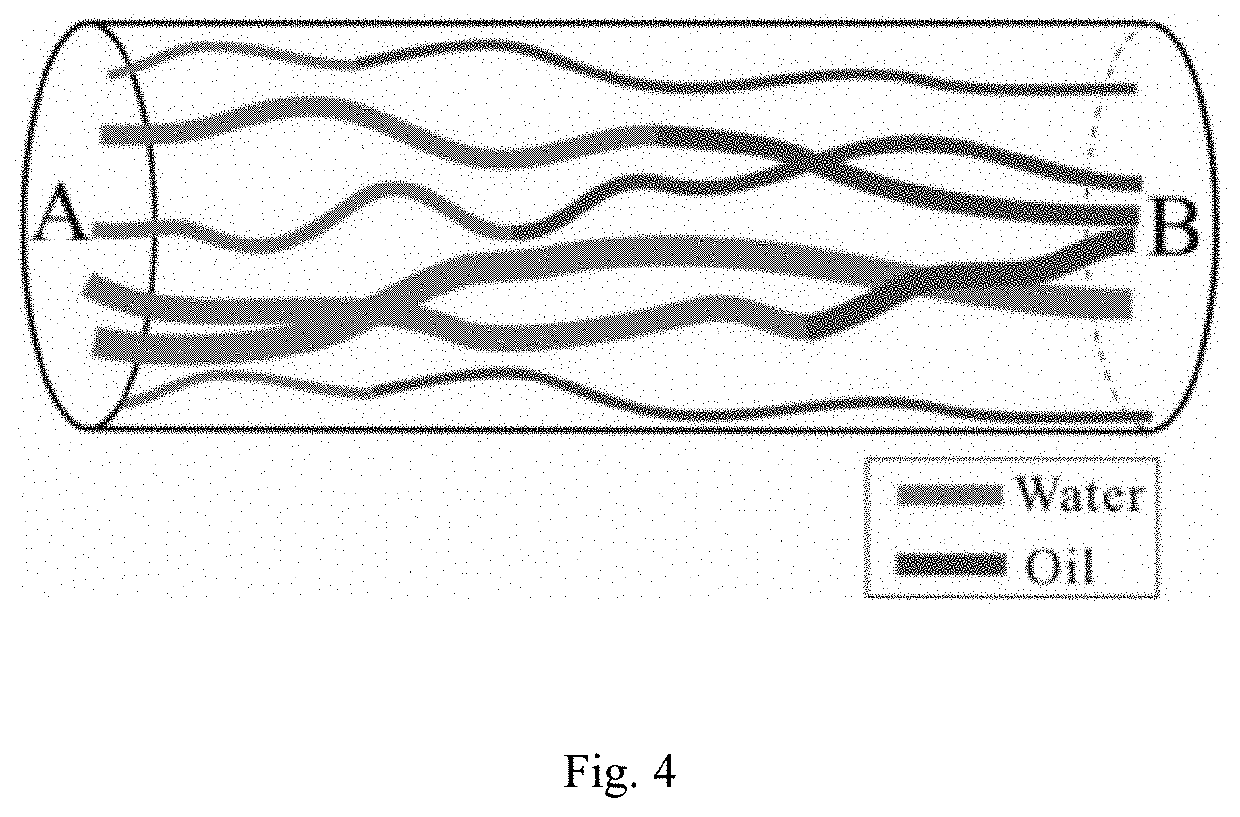Digital imaging technology-based method for calculating relative permeability of tight core
- Summary
- Abstract
- Description
- Claims
- Application Information
AI Technical Summary
Benefits of technology
Problems solved by technology
Method used
Image
Examples
embodiment 1
[0101]When the embodiments are implemented, in
[0102](1) Select low-permeability tight sandstone sample, prepare a small column sample satisfying resolution requirements, with a size of 8 mm (diameter)×20 mm, and then scan the sample and establish a digital core by MicroCT-400, as shown in FIG. 2.
[0103](2) Calculate tortuosity fractal dimension DT=1.1 and porosity fractal dimension Df=1.3 by 3D image fractal box dimension algorithm, and perform statistical analysis on maximum pore equivalent diameter λmax=2.6×10−5 m and minimum pore equivalent diameter λmin=4.3×10−8 m by a label.
[0104](3) Taking t=0 as the starting time, calculate associated critical capillary diameter, and judge the distribution of all capillary fluids in the core at that time.
[0105](4) Simulate and calculate single-phase fluid flow rate Qs, then calculate water phase flow rate Qw and oil phase flow rate Qo at t=0.
[0106](5) Simulate and calculate water-phase fluid volume, pore volume and water saturation in the core...
embodiment 2
[0110]In
[0111](1) Select different porosity fractal dimensions Df=1.3, 1.4 and 1.5, the same tortuosity fractal dimension DT, maximum pore equivalent diameter λmax and minimum pore equivalent diameter λmin as the characteristic values of the core pore structure parameters, and use them to calculate the influence of difference porosity fractal dimensions on the relative permeability curve.
[0112](2) Taking t=0 as the starting time, calculate associated critical capillary diameter, and judge the distribution of all capillary fluids in the core at that time.
[0113](3) Simulate and calculate single-phase fluid flow rate Qs, then calculate water phase flow rate Qw and oil phase flow rate Qo at t=0.
[0114](4) Simulate and calculate water-phase fluid volume, pore volume and water saturation in the core at t=0.
[0115](5) Calculate relative permeability kro and krw corresponding to water saturation.
[0116](6) Repeat the steps (3) to (5) of Embodiment 2, calculate the parameters at the next time S...
PUM
 Login to View More
Login to View More Abstract
Description
Claims
Application Information
 Login to View More
Login to View More - R&D
- Intellectual Property
- Life Sciences
- Materials
- Tech Scout
- Unparalleled Data Quality
- Higher Quality Content
- 60% Fewer Hallucinations
Browse by: Latest US Patents, China's latest patents, Technical Efficacy Thesaurus, Application Domain, Technology Topic, Popular Technical Reports.
© 2025 PatSnap. All rights reserved.Legal|Privacy policy|Modern Slavery Act Transparency Statement|Sitemap|About US| Contact US: help@patsnap.com



